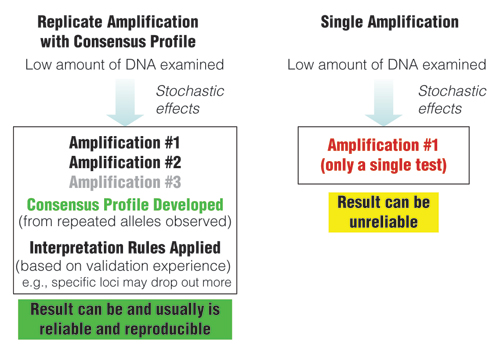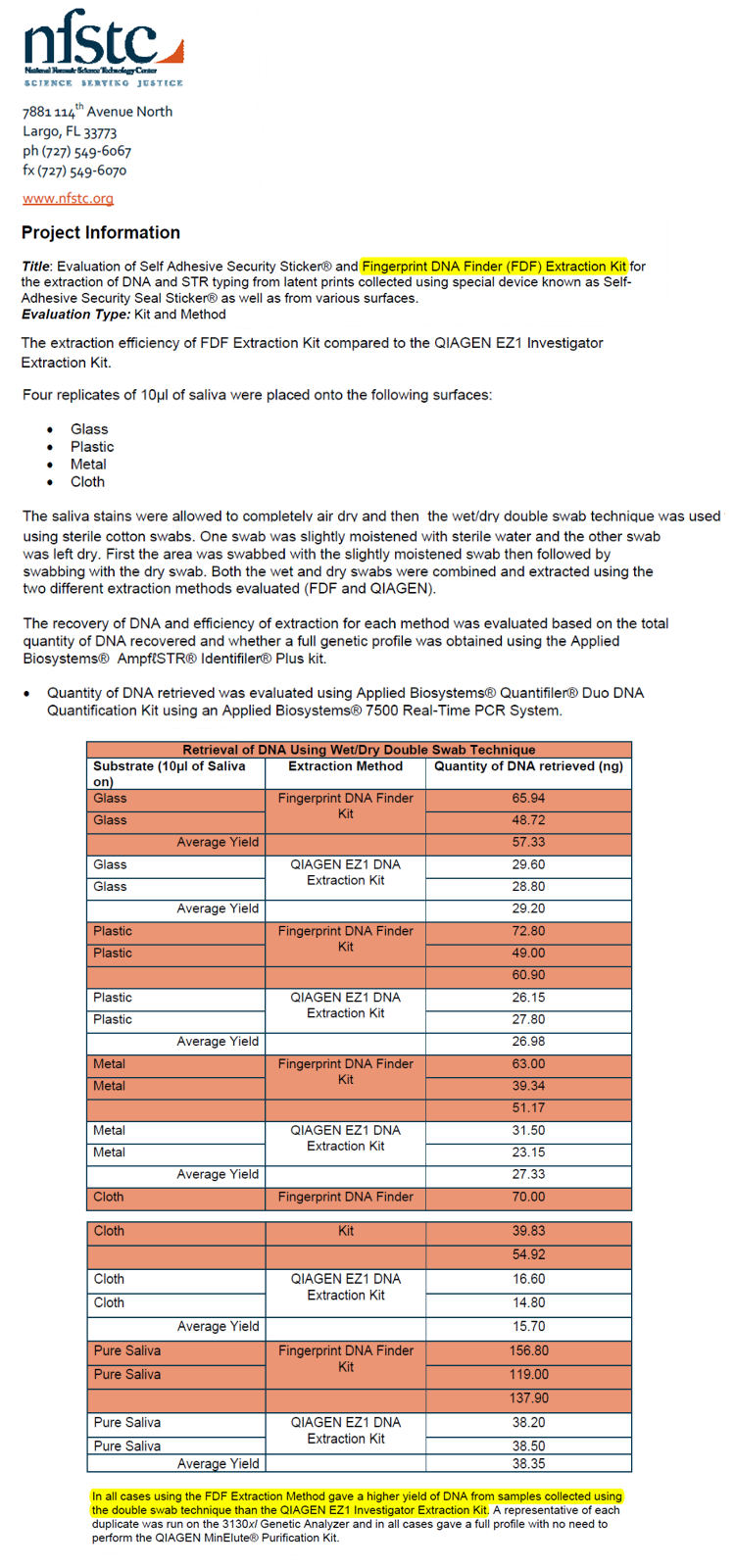User Manual and Related Findings - FDF Project
Main menu
- HOME
- Separador 1
- Product Information
- Separador 2
- Related Bibliography
- Separador 3
- FDF Kit Orders
- Separador 4
- Contact Us / Partners
User Manual and Related Findings
User Manual and Related Findings
Please, click on the following button in order to download the FDF Kit User Manual.

NOTE: Lysis Volume
The lysis volume (80 ul) suggested in our protocol was internally validated taking into account 2 issues:
a) Appropriate relationship lysis volume: assumed cell content.
b) Criteria supported by several authors (NIST, OCME) in order to perform replicate amplifications to get reliable results. "To avoid or limit the possibility of getting the wrong answer when testing low amounts of DNA, replicate PCR amplifications are performed and a consensus profile developed. The standard practice is to PCR amplify either two or three aliquots of a DNA extract. Alleles that occur more than once (i.e., repeat) in the obtained profiles are deemed "reliable" as they have been reproduced in separate DNA tests".

However, other authors suggested that splitting a sample into fractions (aliquots) increase the analysis limitations, and efforts should be made to concentrate the template as much as possible into one single reaction.
Each laboratory should validate the final lysis volume to be used with forensic samples, according to the protocol used.

Related Articles That Support Our Findings
A) We recommended the use of our Lysis solution (containing tensoactive substances) for swabbing procedures, and now:
S. M. Thomasma et al. / J. Forensic Sci. Vol. 58, No. 2 (2013) 465-
FIG. 1 -
B) We recommended the use of FDF Kit with firearms, and now:
Samuel Nunn / J. Forensic Sci. Vol. 58, No. 3 (2013) 601-
TABLE 7 -
Evidence Items |
Fingerprint Cases |
TriggerPro Cases* |
Total cases with forensic requests |
147 |
160 |
Cases producing |
||
Viable fingerprint images or DNA profiles |
21 |
104 |
% Total cases |
14.3 |
65.0 |
* TriggerPro = DNA Analysis
Partial table.

